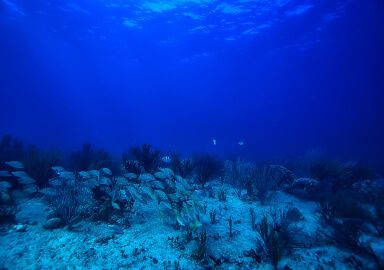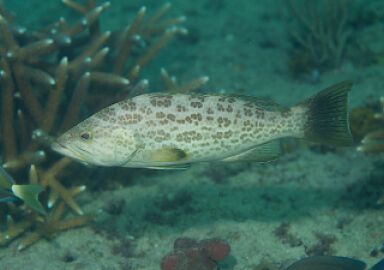Gag Grouper
Somewhat dull colored in contrast to other groupers, gag grouper is one of the most common grouper species, and a very popular game fish.
View 20 listings
20
listings
–
price starting from
1
countries
Where and When?
Gag grouper is one of the commonest groupers in many areas within their range and they currently have a disjunct natural distribution with two apparently separate populations. The northern one spreads from North Carolina down the USA eastern seaboard, round Florida and the Gulf coast to Yucatan. The second, smaller, population is located near Rio de Janeiro in Brazil. Although spawning takes place offshore many of the juveniles find their ways into brackish waters in estuaries and lagoons. Small specimens may be common in seagrass beds but they generally move seawards as they grow and most adults are found in the ocean and seem to favour rocky substrates in moderately deep water. The bycatch of juvenile gag grouper in prawn trawls is seen as a problem. As mature fish most males seem to favour considerably deeper water than females but the males move shorewards and aggregate with females around spawning time. Most fish are caught in daylight but, where it is possible, night fishing can produce good results.
About Gag Grouper
The gag grouper (Mycteroperca microlepis) is a large member of the subfamily Epinephelinae, a.k.a the “true groupers”. This species can be described as “drab” and grey, in contrast to many other members of this family, which are colourful or have very distinguishable colour patterns. Gag grouper are mottled with a variety of colours but mostly greys and browns and no overall clear pattern. They can, however, change colour and there is a “camouflaged pattern” they adopt which has five dark brown saddles on the back of the fish. The shape is oblong, laterally compressed and has large pelvic, anal and caudal fins. They are a long lived species and can live to 30 years of age and reach 1.45 meters (4’9”) in length and 36.5 kilograms (80 lb) in weight. Most fish caught by anglers, however, are around 50 cm (1’8”) and 10 to 15 kilograms (22 to 33 pounds). Adults of the species are usually single or live in loose groups of 5 -50 specimens of similar size. They are protozygous hermaphrodites in that, at a size of 67 to 75 centimeters, they change sex from female to male. The gag grouper spawn offshore in December to May in fairly deep water.
How to Catch?
Gag grouper are important to both the sport and recreational fisheries in many areas. Commercial fishing is mostly carried out on the west coast of Florida and from boats using vertical fishing gear. Sport anglers can catch fish from high up estuaries to targeting large males deep offshore, and so a wide variety of methods and equipment may be used. Inshore, using light tackle in estuaries and lagoons, live bait, natural bait, lures and even fly may produce results. Shore and boat fishing generally requires medium to heavy tackle but a diverse array of baits and lures may work. Casting bait, lures or flies in shallow areas, where the fish are near the surface, can lead to success. In the deep water, however, the fish are usually near the bottom and heavy terminal tackle is needed with the use of suitable bait or jigs. Most states have strict controls over fishing for gag grouper to avoid overfishing and to protect juvenile stock.















